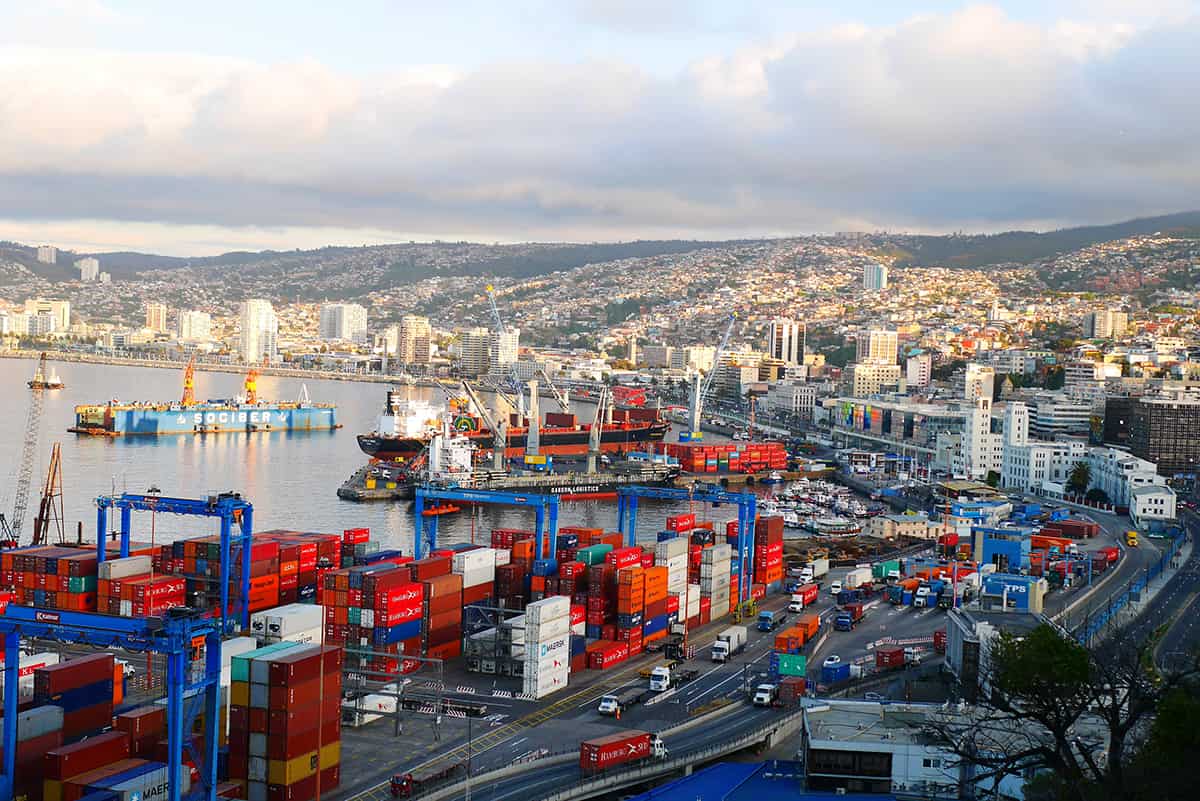A push for corporate resilience is expected to boost manufacturing in Latin America as well as investment from both northern neighbors and among countries within the region.
After taking the Mexican and Caribbean economies by storm in the aftermath of the pandemic, the nearshoring boom in the Americas is spreading further, through Central America and the Caribbean to the very tip of the southern countinent.
Estimates published in 2022 by the Inter-American Development Bank (IDB) say that while Mexico is expected to continue to be a focal point of the nearshoring trend, other economies further south—including Panama, Brazil, Peru, Uruguay, Colombia, Paraguay, Argentina and Chile—are projected to reap an extra $29 billion annually in exports from nearshoring initiatives. The trend is also likely to push service revenue in the region upward, with another $14 billion per year across the region encompassing South America, Central America and the Caribbean.
If confirmed, these numbers would mark a profound change in the economic matrix of the Americas. Indeed, according to estimates from Santander Mexico, the phenomenon could drive foreign direct investment (FDI) to higher levels than remittances as soon as 2025. Nearshoring projects, according to observers, will fuel other sectors of the economy due to greater exchange within the region. “Increased manufacturing output in a place like Mexico could fuel commodity demand from countries such as Brazil, Chile or Argentina,” notes Alvaro Vaqueiro, head of Corporate and Investment Banking for BBVA Mexico.
Varun Gupta, professor of logistics and business analytics at the University of North Georgia (UNG), sees even more profound consequences for the region as the trend deepens, such as the rearrangement of political forces and even the need for new economic treaties. The IDB has underlined the need for more preferential trade agreements that would help foster economic growth and competitiveness in the region.
“Nearshoring will likely have ripple effects,” Gupta explains, “such as higher dependence of the US and Canada on Latin America, and influence in regulations and treaties with these countries to secure supply chains.”
New Industries, New Geographies
The primary focus of nearshoring investments has, up until now, revolved around the gas, petrochemical and automotive sectors—driven by the US’ and Canada’s pursuit of alternative energy sources on the one hand and establishment of new automotive supply chains amid persistent tensions with China on the other. In Mexico last year, 32% of nearshoring initiatives addressed energy and 30% focused on the automotive sector, according to consultancy BNamericas.
As nearshoring becomes more prevalent, global corporates in a wide range of sectors—such as technology, customer services, pharmaceuticals, and electronics manufacturing—are seeing progressively more value in moving production and services to Latin America. Across industries, “57% of US- and EU-based businesses consider nearshoring an essential element of their supply chain strategy,” according to new research published by consultancy QIMA.
As these companies seek to leverage Latin America’s cost-effective labor and capitalize on cultural and geographic proximity, they are inclined to gravitate toward locations abundant with talent, explains César Cantú, managing editor at Nearshore Americas.
“Recruiters and CTOs, mostly, are chasing talent,” he says. “It’s not really about the geographies, per se. It’s about the talent in those geographies.” Some countries have gained significant ground as a preferred destination for corporations looking for technology-related investments.
“Latin American countries understand that the market for their services is global and that they are sitting on an immense labor pool,” notes Nearshore Americas in a white paper cosigned with software developer and IT consulting firm Zigatta. “As a result, they are positioning themselves for future growth, with over a million software developers in the region—and more being trained every day.”
Meanwhile, in business-process outsourcing (BPO), countries closer to the US are expected to hold an edge. Brazil, too large to ignore, is key, and nearby Mexico is also an economic powerhouse. But smaller neighbors close by, such as Colombia, Costa Rica and Jamaica, stand among preferred nearshoring destinations, Nearshore Americas research finds, and other Caribbean economies could see increased demand. “We see interesting opportunities for BPO in the Caribbean [beyond Jamaica],” says Cantú. “We believe the region will grow more relevant in the global BPO landscape.”
Changing Company Profiles
Global giants such as Microsoft, which greatly expanded its offices in Costa Rica recently, and Tesla, which is building a factory in Monterrey, Mexico, are some of the companies setting a precedent for the nearshoring boom. Additionally, energy behemoths such as Iberdrola, TC Energy, Valero and Shell have helped deepen the trend.
However, recently, the market has witnessed more midsize companies moving to nearby but less competitive geographies. Such is the case of Michigan-based Whirlpool, which has moved part of its operations to Argentina. Similarly, Texas-based delivery company Fetch Package spread 10% of its engineering team among Brazil, Peru, and Argentina.
Analysts believe this trend will likely gain traction in the short-to-medium term. “We expect more landings in Tier 2 and Tier 3 geographies, particularly from midsize players looking to move away from the hunting ground of the bigger fish,” explains Cantú. Nearshoring within the region, however, has yet to pick up. According to the IDB, less than 15% of Latin America’s exported goods are traded within the confines of the region.
Old Challenges
Despite the ongoing boom, infrastructure and investment security remain pivotal challenges for Latin America—particularly for the so-called alternative geographies. “Companies analyze the land where they will be located according to the infrastructure they have, the services, and the amount of specialized labor that could work in their companies,” explains Adriana Vargas, CEO at real estate developer Growth BD Mexico.
“FDI tends to look to longer-term factors such as a country’s comparative advantages, infrastructure, institutional framework or medium-term growth prospects,” agrees BBVA’s Vaqueiro. “In the case of already-deployed investment, the capability to meet new demand is the key near-term factor.”
Likewise, the IDB underlines the need for further improvement in infrastructure across the entire region, including in more-developed economies such as Brazil, Mexico and Argentina. According to the bank’s data, every dollar allocated to promoting new FDI could generate almost $42 in additional foreign direct capital over the long run.
“Investment in infrastructure, energy and security are basic for this phenomenon, since not only is the number of industrial warehouses for manufacturing or logistics growing, but housing is also growing due to the workforce that operates these places,” says Vargas. “The services serving that housing are growing, and the hotel sector is growing to be able to serve the floating population that comes and goes from these places for work.”
Still, gaps remain. Despite the labor pool in the region, recent research from ManpowerGroup underlines the human resource gaps that many foreign companies still have, particularly in secondary geographies. “Brazil, Argentina, Mexico, Chile and Colombia are way ahead in matters of infrastructure, talent availability, experience with the market, and knowledge base, compared to the whole rest of the Latin American and Caribbean region,” Cantú points out. In fact, ManpowerGroup finds seven out of 10 international employers across Latin America, Central America and the Caribbean reported difficulties finding the talent they need in 2023.
Old Risks
But while Latin America has only to gain with further cooperation and infrastructure investments, political risks remain high, suggesting a volatile landscape regarding governmental actions.
“Given the regulatory risks, political turmoil and differences in logistics infrastructure in these countries, venture capital firms have been reluctant to fund many of these risky [nearshoring] projects,” explains the UNG’s Gupta. “There is political instability and volatility directly tied to regulations. This may result in higher risks by nearshoring to these economies.”
Gupta also notes that if the trend deepens without proper governmental backing in the region, unwanted consequences such as inflation and supply chain disruptions may arise. “While nearshoring brings production closer to the US, it can also push prices up in the future,” he concludes. “Higher labor and resource costs in these new locations, along with potential supply chain hiccups, could fuel inflation.”




